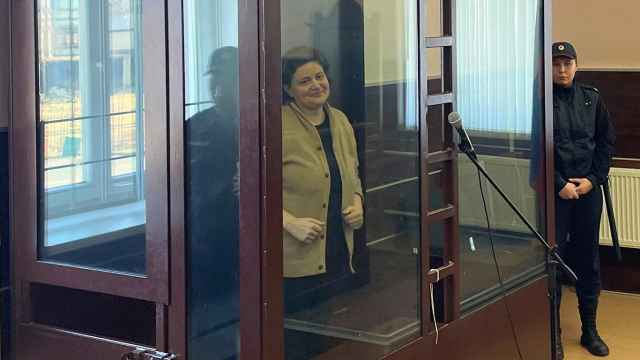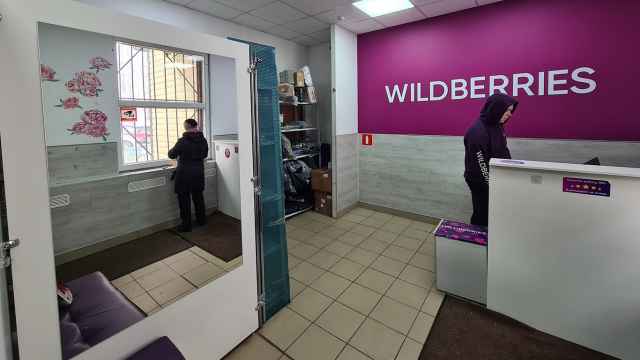The do-it-yourself mentality runs deep in the Russian soul, as evidenced by the $14 billion in estimated sales of renovation materials, equipment and fixtures last year, with shower stalls being the item most in demand.
Though a common element of the broader home improvement sector in the West, professional plumbers and interior decorators tend to be used only by higher-end customers.
The middle class, supported by its disposable income and a resurging housing market, is now more likely to shop for toilets and kitchen tiles in one of the newly opened do-it-yourself, or DIY, retail chains, rather than traditional open-air markets.
Booming sales and increasing investment by international and local players is proof of the trend.
The recession saw the DIY retail market slump by as much as 20 percent, but now it is back on track, according to various estimates by analysts and retailers.
Overall Russian DIY sales are growing faster than any other market in Europe now, at 15 percent, versus countries like France, Spain and Germany, which are seeing 3 to 4 percent growth, said Francois Corda, vice president of the Federation of European DIY Manufacturers.
DIY retail chains are seeing much bigger growth — 30 percent a year since 2010 on the average — mostly from opening new locations and taking over smaller mom-and-pop shops.
"Basically, we keep opening stores," said Alexei Iovlev, general director of St. Petersburg-based Metrika chain.
In 2 1/2 years Metrika, whose revenue at the end of 2010 was $249 million, according to the latest InfoLine Retailer Top-100 rating, tripled from 15 to 45 stores.
This year the company is close to reaching its original target of opening 20 stores for the year, with 15 new outlets already up and running. Iovlev's revised goal is to become the Russian retailer with the most locations, by opening 10 more stores in the northwest region by the end of the year.
Home Center, an international chain that also operates in Israel, Greece, Cyprus and Belarus, plans to add five stores this year to the five that are already open in Moscow, Orenburg, Chelyabinsk and Yaroslavl.
The company is growing at 40 percent per year locally, marketing director Irina Revnivykh said.
"There is a lot of demand," she said.
There are about 4,000 DIY retail stores throughout the country, with most stores in the central and northwestern regions, Finam analyst Maxim Klyagin said.
Growing paychecks and the gradual stabilization of the real estate market fuels the growth trend, he said.
Upscale apartment sales increased 15 percent in the first quarter of 2011 compared with the same time period last year, said Penny Lane realtor Alexander Ziminsky.
The decline of traditional open-air markets adds to the fast growth of DIY retail chains. The trend is most prevalent in Moscow and surrounding regions, but slowly the rest of the country is migrating to shopping in supermarkets and hypermarkets.
Open-air markets have only 15 percent market share, Klyagin said.
"It's a standard situation for all retail — open-air markets decrease as more dynamic, modern, more competitive retail formats continue to grow," he added.
The large chains offer a broader selection and lower prices because they deal directly with distributors, retailers said. Experts say goods sold at markets usually pass through three or four middlemen before getting to the consumer.
Western giants like French hypermarket chain Leroy Merlin, with 16 stores and revenue of $1.3 billion, are still the top players, but Russian chains like Maxidom, with 8 stores and revenue of $404 million, are keeping pace, according InfoLine.
Market leaders include OBI with 18 stores and revenue of $848.7 million, Castorama with 14 stores and revenue of $402 million, and Starik Khottabych with 49 stores and revenue of $221.6 million, according to InfoLine.
Despite challenges like incompetent distributors, expensive rent and lack of available property, the DIY retail business is promising because of relatively low saturation and growing demand.
Though official figures don't exist, Revnivykh calculates that no major player has more than 20 percent market share, with Home Center having less than 8 percent.
The majority of DIY products and materials are still imported from China and Southeast Asia, but local sourcing is growing, Revnivykh said.
Spanish bathroom fixture giant Roca, now the largest manufacturer of bathroom fixtures in Russia, opened their seventh factory in the country and third in the Chuvashia republic in central Russia in June.
Roca's local revenue in the first half of 2011 reached $200 million, and the company is optimistic about further success.
"Russia is a country of big expansion. It could be a huge market," Roca investment analyst Roger Massana said.
A Message from The Moscow Times:
Dear readers,
We are facing unprecedented challenges. Russia's Prosecutor General's Office has designated The Moscow Times as an "undesirable" organization, criminalizing our work and putting our staff at risk of prosecution. This follows our earlier unjust labeling as a "foreign agent."
These actions are direct attempts to silence independent journalism in Russia. The authorities claim our work "discredits the decisions of the Russian leadership." We see things differently: we strive to provide accurate, unbiased reporting on Russia.
We, the journalists of The Moscow Times, refuse to be silenced. But to continue our work, we need your help.
Your support, no matter how small, makes a world of difference. If you can, please support us monthly starting from just $2. It's quick to set up, and every contribution makes a significant impact.
By supporting The Moscow Times, you're defending open, independent journalism in the face of repression. Thank you for standing with us.
Remind me later.





